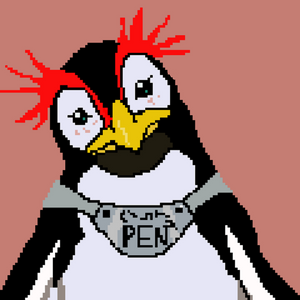・Animation production runs parallel to the original manga series
In the early stages of production, you typed a composition plan for episodes 1 through 25 on your word processor. There was also an episode of a play at the school festival, and it was mentioned that there might be a play within a play.
At our first meeting with the editors in charge at Hakusensha, I had heard in advance the outline of the future storyline that the author, Tsuda, had in mind.
So I already knew about the episode in which they set up a drama club after the summer vacation and performed a play of their own creation at the school festival.
This was reflected in the composition plan.
At first, we underestimated that we might manage to produce one compilation film at the studio, and that we might be able to produce nine episodes from the original manga.
However, that plan has completely disappeared.
Theoretically, the amount of original manga was definitely not enough for 29 episodes.
If the anime episodes caught up with the original manga, I planned at first to make some of the later episodes original stories.
But once I started production, my workload was so huge that I had no time to think about the latter episodes at all.
While digesting the original manga sequentially, I left some episodes to the staff who wanted to write the script.
However, I didn't think that the story about the preparation for the school festival would be that long in the original manga, so the third one came before the play-within-a-play episode.
That's the challenge when creating a work based on an unfinished original story.
Some time after the last episode was aired, the person in charge of the broadcasting station told me that it would have been a beautiful ending if the story that Saeki (Shoji, Gainax) had directed had been the final episode.
Indeed, the story that Saeki summed up was the appropriate content for the final episode.
But the actual production site was super busy and pressed for time.
The storyboards for the first three sections, which had been completed according to the original story, were only eight minutes long.
The content was drawn in a normal animation style, so there was no time for drawing, finishing, or art.
This was terrible.
I had to wait for the latest manuscript, and when it arrived, I would compose the storyboards and complete the animation in time for the broadcast.
I think I talked to Matsukura and Sato about this, and then we created the animation.
I was so busy at that time that my memory is vague though.
Anyway, I drew the storyboards to make it on time.
I tried to make the animation as easy as possible for Hiramatsu, the animation director.
If there was no time to match the mouth movements with the voice, I tried to make it so that a narration could be played.
In this way, I tried to match the depiction to the situation.
I think I kept the parts that could be drawn as cell animation short and asked the Gainax staff to do the original drawings.
Imaishi was burnt out and thought his work was done.
I think it was tough for him, but he did it.
I am grateful.
I am grateful to everyone.
Even though we had more time than the final episode of "Eva," I am amazed that we were able to deliver the film with only 10 days left from the revision of the storyboard to the broadcast.
I decided to structure the story drama as a work of art so that it would not be finished, but its continuation could be read in the next issue of the magazine in which it was published.
I thought it would be fine as the final episode.
That is why the final message was "To be continued."
However, in order to avoid the pressure from the TV audience that it would be bad to say "continue" in the final episode, I put "End" at the end of the ending to settle the issue.
・・
